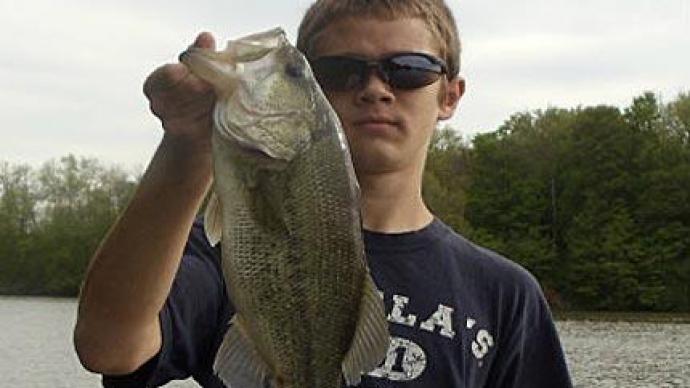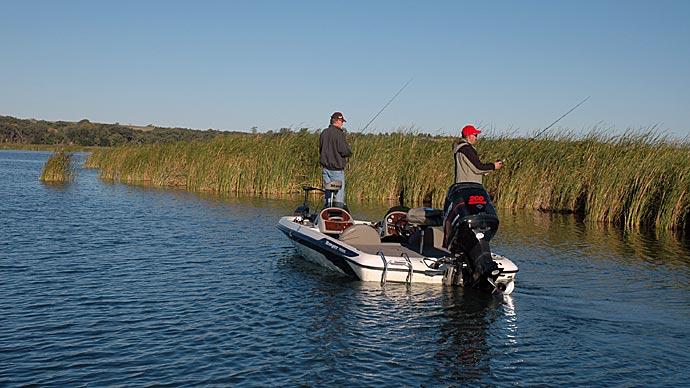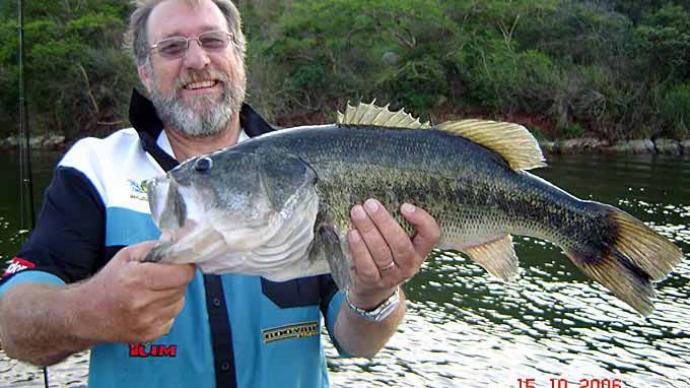Hey, BassResource fans, Mike Iaconelli here. I want to talk to you about Carolina rigging, or C-rigging, as we know it. I'm going to give you three tips to become a better Carolina rig angler.
The first one is the weight. The weight is the most important piece of the Carolina rig, to me. It's really what defines the Caroline rig, and the first basic theory I want you to know about the weight is that, when I'm Carolina rigging, I'm trying to catch fish, but more important than that, when I'm Carolina rigging, I'm trying to learn what's on the bottom. The Carolina rig, to me, is one of those baits that's a transmitter, and when I make a cast and I'm dragging it back, not only am I trying to catch a fish, but I'm trying to learn what's on the bottom. I'm trying to learn the contour of the bottom, the composition of the bottom, whether it's rock, sand, or gravel, and I do that through the weight.
My first tip is to pick a weight that's tungsten. I know a lot of you guys out there love lead, you like brass, or other materials, but go to a tungsten weight, because a tungsten weight is going to be the best transmitter of what's on the bottom.
The other tip is, I like to use a weight that's going to be heavy enough to maintain bottom contact. Basically, I use three different weight sizes of a tungsten weight. I like to use a half ounce. I like to use a three quarter and I like to use a one ounce. I'm going to use the half ounce when it's calm conditions, or when I'm fishing water that's 15 feet or shallower. The three quarter ounce, I'm going to use when there's a little bit of a breeze, choppy conditions, or when I'm fishing in water that's 15 to 25 foot deep. Finally, the one ounce weight, I'm going to use that under real windy conditions, or water that's 25 foot or deeper. The first tip is use a tungsten weight, and then pick a weight that's appropriate to the weather conditions and the depth you're fishing.
Second tip when you're Carolina rigging is the distance of the leader. That's important. You've got your tungsten weight to a little bead. I like to use a plastic bead to a barrel swivel, and then you're going to use a leader. Let's talk about leader length, and let's talk about the material of the leader.
First, a leader length. I use leaders that are 12 inches long all the way to about four foot. It seems really long, but I do use those real long leaders occasionally. The reason that I'm going to change my leader length is primarily based on the cover and then the activity level of the fish. They are the two things I'm always thinking about.
The first one is the cover. I really always want to think about that leader length in relation to the cover. An example of when I'd want a real long leader would be cover situations where that cover is high off the bottom. A great example of that is submergent grass. If you get a submergent of grass like milfoil, or eel grass, or hydrilla, or cabbage, or so many different types of grass, I'm really conscious of the level of that grass in relation to the leader. I want to pick a leader length that lets the bait rise above the cover, let's it stay above the cover where it's visible and the fish can get to it. I'm always thinking about cover. Another example would be gravel. You're fishing in the wintertime, and you're fishing a pea gravel small rock bottom. I don't need a real long leader. The weather's cold. That's when I go to that short leader, 12 inches, 14 inches, a foot and a half. Think about your cover in relation to leader length.
The other second thing is activity level of the fish. My general rule of thumb is that the more active those fish are, the longer leader I want. The less active those fish are, the colder the water, the shorter leader I want. Real cold water conditions, water temperature is 55 degrees or less, I tend to go to a shorter leader. Under warmer water conditions, now you're post-spawn, summertime pattern, water temperature is 70, 80, even 90 degrees, I go to a longer leader. Think about cover, think about activity level of the fish, in picking your leader length.
The last one, and definitely this isn't the least important, is rod selection. That's real important when you're Carolina rigging because you want a rod that lets you cast with that long setup, but you also want a rod that's got backbone, but a little bit of tip to get into those Carolina rig fish. My favorite rod for Carolina rigging fish is a 7’ 6” medium heavy action rod. A lot of guys Carolina rigging use a 7’ 8”, or even an eight foot flipping stick and the problem with that rod is it's long. It lets you get a little leverage, but it's got a broomstick action. You don't want that. You want a 7’ 6” rod that's got a little bit of tip to it, a medium heavy. First of all, the length of the 7’ 6” rod's going to help you with the cast, but having a medium heavy action is going to give that rod a little bit of a tip. A 7’ 6” Abu Garcia Veritas rod, for example, has about 80% backbone but 20% tip, and that lighter tip is going to let you load the rod to make those long casts.
The other thing that little bit of tip's going to do is that when you get that bite, and you reel down, you go to set the hook, you actually want a little bit of a tip to act as a shock absorber to when you jam that fish and you set that fish. The last tip is pick the right rod. Pick a long rod. Pick a 7’ 6” rod, but don't pick a broomstick rod. Pick a rod that's got a medium heavy action.
If you do those three things in your Carolina rig fishing, I guarantee when you're fishing the old C-rig, you're going to put more fish in the boat. Mike Iaconelli for BassResource.



